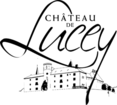
We do not know the exact date of the first construction of the castle, but the written history begins in 1296. We find in the archives an act of Guillaume de Lucey, who donated the castle and the land to his nephew Jacquemet de Chevelu.
Lucey is a small commune of the Savoyard Foreland with about 350 inhabitants. Situated between the Rhône river and the Bourget lake, Lucey is located on the western slopes of the Charvaz mountain (1 154 m). A magnificent fortress from the end of the XIIIᵉ century, built on a rocky spur with an unobstructed view of the Rhone, the Château de Lucey makes its mark.
The Savoyard Foreland has been geologically tormented by the various ice ages. The Rhone glacier has shaped a very fragmented landscape, the pedology (the science of soils) is rich in a great variety.
We find clay-limestone scree on the heights, alluvial marl, sub-glacial marl, and others on Jurassic limestone rocks (Bathonian and Bajocian).
The vineyard of Lucey is located along the Rhône on a synclinal plateau perched 100 m above the river. The proximity of the Rhone and the Bourget Lake provides a more temperate microclimate, ideal for the vine with a south-southwest orientation which provides nice sunshine. The altitude of the plots varies between 230 m and 400 m.
In 1992, the owner of the Château, Mrs. Nicole Defforey, decided to plant 1 hectare of Altesse (the historical site of this grape variety). The Château de Lucey wine estate was then created in 1993. It now covers more than 6.5 hectares of vineyards. Mrs. Defforey invested in a winery in the castle’s cellars, which has been expanded over the years to accommodate the production of about 25,000 bottles. The year 2010 marks the arrival of the current winemaker: Christophe Martin. From the beginning, he has sought to change the cultivation practices and winemaking methods of the estate by tending towards healthier agriculture that respects the environment and human beings.
It took two years to apply organic farming methods to the entire vineyard. It was therefore in 2013 that the estate applied for Organic Agriculture certification. The 2016 vintage is the first to be certified. The production potential given by the AOC would allow producing about 55 000 bottles. The practice of organic farming limits production to 25,000 bottles, which is very favourable to the quality of the wines, but increases the cost price per bottle.
The domain produces 3 grape varieties, keeping with this region’s history: Altesse and Mondeuse are two typically Savoyard grape varieties. The Pinot Noir, a Burgundian grape variety, is well suited to the Savoyard hillsides. The estate is part of the DEPHY network of farms, which aims to experiment with techniques that save on phytopharmaceutical products. There are now 3,000 farms involved in innovative methods. The DEPHY network also aims to reduce the use of plant protection products in France to reconcile economically and ecologically efficient agriculture and to protect public health.
This domain is considered to be very economical in terms of inputs.
